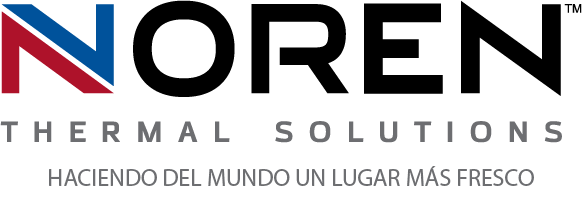 For many years, companies in most industries relied heavily on thermal management solutions that used chilled air to prevent electrical overheating. With the help of solutions such as air conditioners and air compressors, companies could successfully keep multiple electrical enclosures properly cooled. However, while such solutions can effectively lower temperatures inside of electrical enclosures, they can also equate to high energy and maintenance costs the more companies rely on them. Fortunately, this reliance is less important thanks to modern heat exchangers, which turn more natural and efficient ambient cooling processes into high-performance thermal management solutions for a wide variety of applications.
For many years, companies in most industries relied heavily on thermal management solutions that used chilled air to prevent electrical overheating. With the help of solutions such as air conditioners and air compressors, companies could successfully keep multiple electrical enclosures properly cooled. However, while such solutions can effectively lower temperatures inside of electrical enclosures, they can also equate to high energy and maintenance costs the more companies rely on them. Fortunately, this reliance is less important thanks to modern heat exchangers, which turn more natural and efficient ambient cooling processes into high-performance thermal management solutions for a wide variety of applications.
The process of transferring electrical waste heat
Unlike more traditional thermal management techniques, modern heat exchangers are designed to utilize a variety of heat transfer methods to prevent electrical overheating. This involves utilizing an eco-friendly cooling fluid to absorb electrical waste heat, then transfer it away from sensitive electrical components within an electrical enclosure. Once the fluid has carried the heat to a cooler area of the heat exchanger, such as a heat sink, it can dissipate the heat that it has absorbed, then flow back to continue absorbing, transferring, and dissipating waste heat continuously. This stops electrical waste heat from causing the temperature inside of an electrical enclosure to rise, keeping it at just above the ambient temperature outside of the enclosure.
How this benefits modern thermal management
In practice, ambient cooling is significantly more efficient and manageable than more traditional air conditioning or air compression methods of cooling. Transferring waste heat doesn’t require the same complex machinery that chilling air and circulating it does, nor does it require as much energy to power the process. Because most applications have maximum operating temperatures that are well above the ambient temperatures outside of their enclosures, ambient cooling is also more than adequate for most companies’ thermal management needs. This makes ambient heat exchangers an ideal cooling solution for several different types of applications in various industries, including many that go beyond the simple needs of electrical thermal management.
The advancement of ambient cooling solutions
As heat exchangers and their more efficient ambient cooling methods have grown more popular, companies that utilize them have benefited in increasingly more ways. For example, by helping companies eliminate their reliance of air conditioners and air compression units, heat exchangers have helped them also lower their overall energy needs, saving costs and lowering their environmental footprints. In addition, the ability to transfer heat has been utilized for many processes beyond electrical cooling, such as helping companies supplement energy for processes such as wastewater treatment and more.
For more information about turning ambient cooling into high-performance thermal management, call Noren Thermal Solutions in Taylor, TX, at 866-936-6736.







